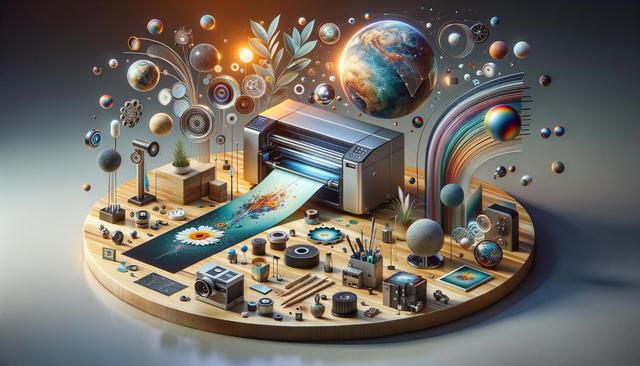How to Print on Any Surface With Advanced Printing Technology
In today’s fast – paced business world, the right printing solution matters. This article explores new business printing tech and innovative solutions for diverse uses.

Understanding Surface Diversity in Modern Printing
Traditional printing methods were largely confined to paper and flat media, but advancements in technology have expanded possibilities significantly. Today, businesses are no longer limited by standard surfaces. Materials like wood, metal, glass, plastic, and even textiles can now be printed on with precision and clarity. This leap in capability is pivotal for companies looking to personalize products, brand packaging, or create unique marketing items. With the rise of 3d Surface Printing, even curved and irregular surfaces are no longer a challenge. This innovation opens up opportunities in industries such as interior design, automotive, and promotional merchandising.
These developments also support customized, on-demand printing, reducing waste and storage costs. A Multifunctioneel Printer capable of handling diverse materials can serve multiple departments within a business, streamlining workflow and improving versatility.
Technologies Driving Multi-Surface Printing
The core of multi-surface printing lies in the integration of advanced technologies. UV printing, for instance, uses ultraviolet light to cure ink instantly, allowing it to adhere to a wide range of non-porous surfaces. Similarly, sublimation printing has made it possible to transfer images onto fabric and coated materials with vibrant, lasting results. For high-resolution, large-scale needs, a Digital Litho Printing Machine offers exceptional quality and consistency, making it a valuable asset for businesses with high-volume requirements.
Some of the most widely adopted technologies include:
- UV Flatbed Printers: Used for printing directly onto rigid surfaces like acrylic, glass, or wood.
- Sublimation Printers: Ideal for textiles and promotional items like mugs and t-shirts.
- Hybrid Printers: Combine the benefits of multiple printing methods for greater application range.
These technologies not only enhance print quality but also reduce drying time and improve durability, which are essential for commercial applications.
Adopting Printing Solutions for Small Businesses
For small businesses, choosing the right printing equipment is a strategic decision. Budget constraints, limited space, and varied printing needs all influence the selection process. A Best Small Business Printer should balance cost-efficiency with multifunctionality. Many modern printers designed for small businesses now support multiple surface types, making them ideal for creative ventures and niche markets.
Small business owners should consider:
- Print volume and frequency
- Types of materials typically used
- Space and maintenance requirements
- Integration with existing software systems
Investing in Small Business Printing Solutions that can adapt to evolving needs is crucial for maintaining productivity and quality.
Applications Across Industries
Advanced surface printing is not limited to a single sector; its applications span across numerous industries. In retail, custom packaging and branded merchandise enhance customer engagement. In manufacturing, direct-to-surface printing streamlines labeling and reduces material handling. The architecture and interior design sectors use 3d Surface Printing to create custom wall panels and decorative elements that were previously difficult or expensive to produce.
Other notable uses include:
- Personalized promotional products for marketing campaigns
- Unique branding on electronics and consumer goods
- Custom signage with enhanced durability for outdoor use
As the demand for personalization and small production batches increases, the flexibility offered by technologies like the Digital Litho Printing Machine becomes even more valuable.
Choosing the Right Equipment for Your Needs
With a wide array of printers and technologies available, selecting the right equipment can be a complex decision. Factors such as print resolution, material compatibility, ink durability, and operational costs should be thoroughly evaluated. For businesses that require both document printing and object personalization, a Multifunctioneel Printer with extended capabilities can be a smart investment.
Consider the following when making a choice:
- What surfaces are most commonly used in your operations?
- Do you need color accuracy and photo-quality printing?
- Will the printer support future business growth or new product lines?
- Is technical support and maintenance readily available?
Carefully matching your business goals with the right technology ensures a better return on investment and smoother integration into your workflow.
Conclusion: Embracing Innovation in Printing
As industries continue to evolve, so do printing technologies. Businesses no longer need to be confined by traditional media or outdated equipment. By leveraging modern solutions such as 3d Surface Printing, Multifunctioneel Printer units, or a Digital Litho Printing Machine, companies can expand their creative reach and operational efficiency. Whether you’re searching for the Best Small Business Printer or exploring new Small Business Printing Solutions, the key is to align your choices with your long-term vision. Embracing these advanced tools not only enhances your output but also positions your brand at the forefront of innovation and adaptability.